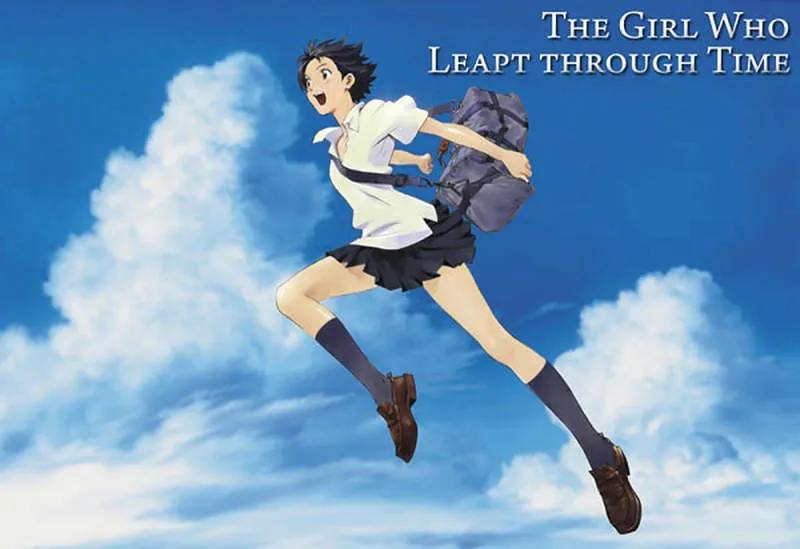If you’re a KomikPDF Lovers who enjoyed the time-bending adventures of “The Girl Who Leapt Through Time,” then you’re in for a treat! There’s a whole world of manga out there that explores similar themes of time travel, alternate realities, and the power of choice. From heart-wrenching stories of regret and second chances to thrilling adventures across different timelines, these manga offer a captivating blend of science fiction, fantasy, and coming-of-age narratives.
This list is compiled based on extensive research on KomikPDF.com, a treasure trove of manga titles. We’ve carefully curated a selection of manga that shares the same spirit of “The Girl Who Leapt Through Time” – stories that delve into the complexities of time, explore the consequences of our actions, and leave you pondering the possibilities of what could have been.
Whether you’re looking for a heartwarming romance with a time travel twist, a mind-bending sci-fi adventure, or a thought-provoking exploration of the human condition, these manga are sure to transport you to worlds both familiar and fantastical. So, buckle up, KomikPDF Lovers, and prepare for a journey through time that will leave you wanting more.
Synopsis The Girl Who Leapt Through Time
Makoto Konno is a normal high school student until she accidentally discovers she can time travel by leaping. At first, she uses her ability to fix small inconveniences and get better grades. However, as she continues to use her power, Makoto realizes the consequences of changing the past and the burden of responsibility that comes with it. The manga follows Makoto’s journey as she grapples with the complexities of time travel and learns the importance of facing the present rather than escaping into the past. She encounters various challenges and consequences, including altering the fate of others and jeopardizing her relationships. As Makoto becomes more aware of the limitations and dangers of her ability, she must find a way to use her power responsibly and understand the true meaning of time and life.
Chrono Crusade
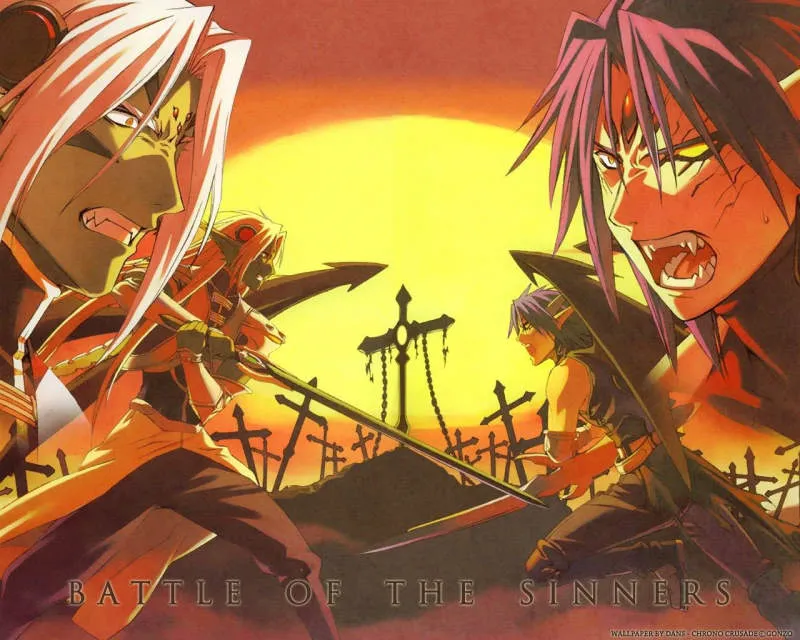
Both Chrono Crusade and The Girl Who Leapt Through Time are anime and manga series that explore the themes of time travel, destiny, and the power of choice. Both stories feature strong female protagonists who are burdened by the consequences of their actions and must navigate the complexities of time manipulation. While Chrono Crusade leans more into supernatural elements and a dark fantasy setting, The Girl Who Leapt Through Time focuses on a more grounded and realistic portrayal of time travel, with a strong emphasis on the emotional and psychological impact of altering the past. Both series ultimately explore the idea that even with the power to change the past, some things are simply meant to be.
Synopsis Chrono Crusade
Chrono Crusade is a manga series written and illustrated by Ryo Akizuki. Set in the early 20th century, the story follows Rosetta "Rosie" C. Christopher, a young woman who works as an exorcist for the Chrono Crusade, a secret organization that battles demons and other supernatural threats. After her younger brother is kidnapped by a demon, Rosie makes a pact with a Magi, a type of demon with special powers. She forms a powerful bond with the Magi, named Azrael, who becomes her partner and weapon in her fight against evil.
Together, Rosie and Azrael travel the world, taking on dangerous missions and facing powerful enemies. Along the way, they encounter other exorcists and characters with their own motivations and secrets. The series explores themes of faith, destiny, and the cost of power as Rosie struggles to control her growing demonic powers while trying to save her brother and protect the world from evil.
Steins;Gate
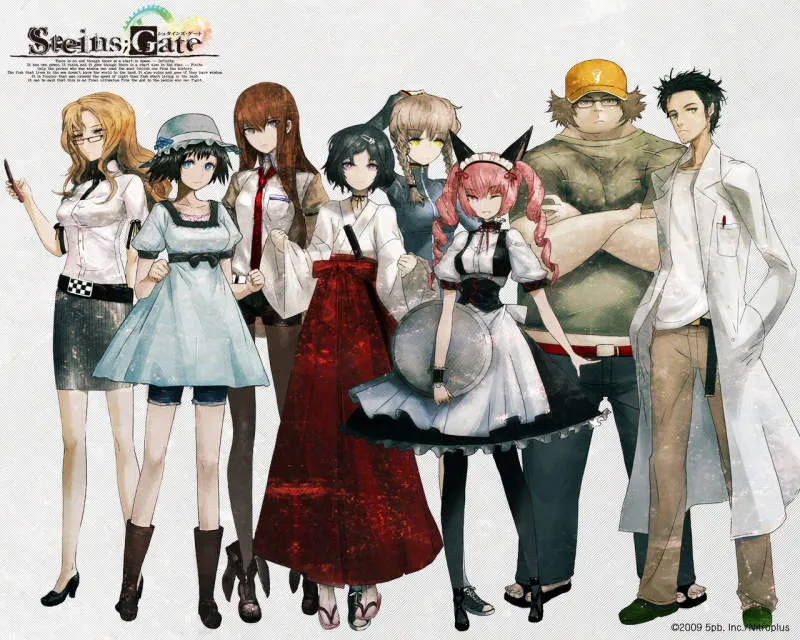
Both Steins;Gate and The Girl Who Leapt Through Time are popular anime and manga series that explore the themes of time travel and the consequences of altering the past. The two stories share similarities in their core concept of a protagonist who gains the ability to travel through time, but they differ in their execution and overall tone. Steins;Gate takes a more complex and science-fiction-heavy approach, focusing on the intricate details of time travel and its potential for catastrophic consequences. The Girl Who Leapt Through Time, on the other hand, leans more towards a coming-of-age story, exploring themes of friendship, love, and the complexities of human relationships. While both stories offer captivating narratives and thought-provoking themes, they ultimately present different perspectives on time travel and its impact on the characters involved.
Synopsis Steins;Gate
Steins;Gate is a Japanese science fiction visual novel and multimedia franchise created by 5pb. and Nitroplus. It tells the story of Rintaro Okabe, a self-proclaimed mad scientist, and his friends who discover a way to send emails to the past using a modified microwave oven. This discovery opens up a world of possibilities, but it also brings with it the potential for dangerous consequences. As Okabe and his friends experiment with their time-traveling device, they soon realize that their actions have a ripple effect on the present, creating alternate timelines with drastic changes.
As the story progresses, Okabe and his friends find themselves embroiled in a conspiracy involving a powerful organization known as SERN, which is also working on time travel technology. They must navigate the complexities of their time-traveling adventures, facing the consequences of their actions and trying to prevent a catastrophic future. Steins;Gate is known for its compelling characters, thought-provoking themes, and exciting plot twists. The story explores the dangers of altering the past, the importance of making choices, and the value of human connection.
Re:ZERO - Starting Life in Another World
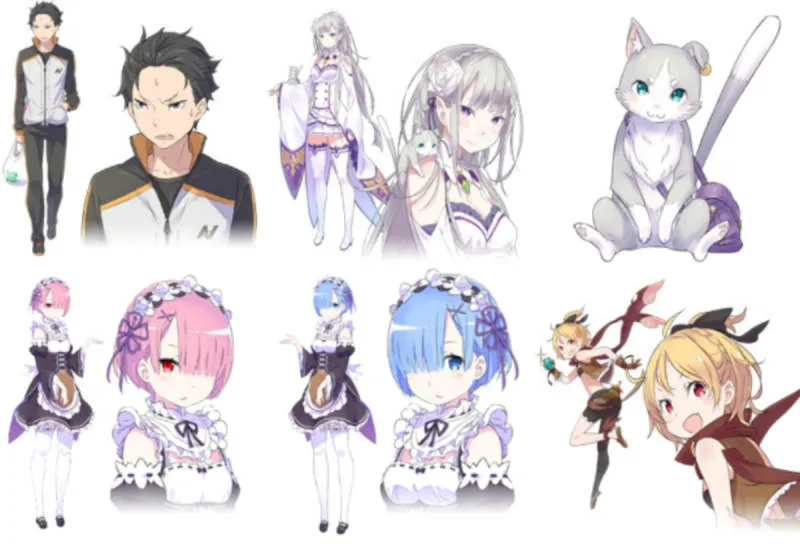
Both Re:ZERO – Starting Life in Another World and The Girl Who Leapt Through Time explore the themes of time travel and the consequences of altering the past. Re:ZERO centers on Natsuki Subaru, who gains the ability to “return by death” after being transported to another world. He is forced to confront the trauma of reliving the same events and the weight of his choices. The Girl Who Leapt Through Time follows Makoto Konno, a high school girl who discovers she can travel through time, but learns that her actions have unintended repercussions. Both protagonists grapple with the ethical implications of manipulating time and the emotional toll of their powers, leading to introspective journeys of self-discovery.
Synopsis Re:ZERO - Starting Life in Another World
Re:ZERO - Starting Life in Another World follows Natsuki Subaru, an ordinary high school student who is suddenly transported to another world. He is quickly thrust into a perilous situation when he encounters a beautiful, silver-haired half-elf named Emilia. However, Subaru soon discovers a terrifying ability – he can "Return by Death", which means that if he dies, he will be sent back to the point where he first arrived in this world. Determined to protect Emilia and the others he encounters, Subaru utilizes his ability and faces numerous challenges, uncovering the hidden truths of this new world and confronting powerful enemies.
As Subaru battles against overwhelming odds, he learns to adapt to his new reality. He forms unlikely alliances with other characters, including the cunning elf Puck, the mysterious witch Beatrice, and the loyal knight Rem. The story delves into themes of love, loss, and the resilience of the human spirit. Subaru's journey is not only about surviving in a hostile world but also about overcoming his own weaknesses and finding his place in this strange and wondrous reality.
Tokyo Ravens
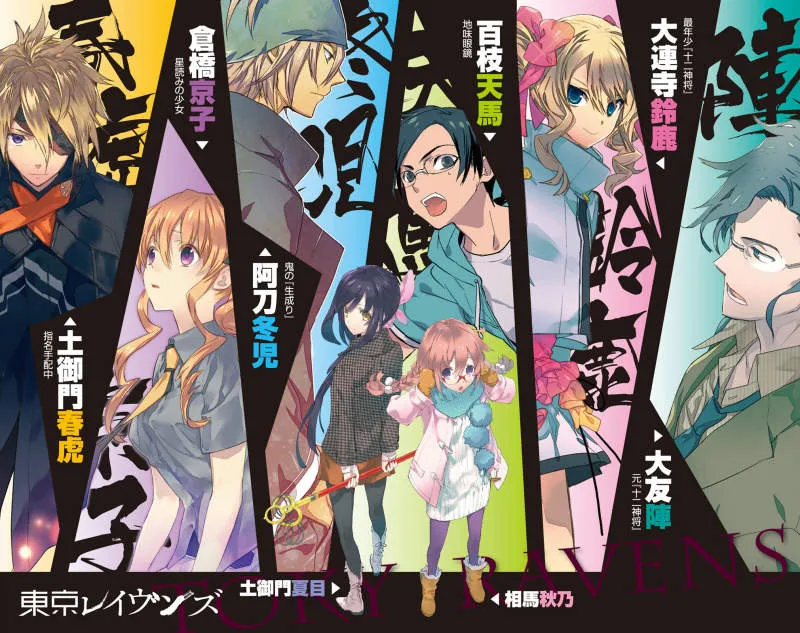
While both Tokyo Ravens and The Girl Who Leapt Through Time are anime and manga series that delve into the supernatural, they share a compelling commonality in their core narratives. Both stories focus on the journey of ordinary individuals who discover extraordinary abilities and are thrust into a world of magic and mystery. The protagonists, while initially hesitant and confused by their newfound powers, must learn to accept their destiny and confront the dangers that come with it. This compelling theme of discovering one’s true potential and embracing the unknown resonates with viewers and readers alike, making both series truly captivating.
Synopsis of Tokyo Ravens
Tokyo Ravens is a Japanese supernatural action manga series written by Kouhei Azano and illustrated by Sumihei. The story follows the life of Tsuchimikado Harutora, a seemingly ordinary high school student who discovers he is a descendant of the Tsuchimikado, a powerful onmyōji clan with a long history of protecting Japan from supernatural threats. He is sent to the Onmyō Academy, a school for aspiring onmyōji, where he meets Natsume Aikawa, a brilliant and powerful onmyōji, and Konoka Amano, a friendly and supportive classmate. As Harutora learns about his heritage and the dangers of the supernatural world, he begins to develop his own magical powers, with the help of Natsume and Konoka.
Harutora and his friends face various threats from dangerous spirits and other supernatural entities, including a powerful and mysterious organization known as the "Four Heavenly Kings". The manga explores themes of destiny, friendship, and the importance of protecting the world from the darkness. Tokyo Ravens is a fast-paced and exciting series with a complex plot and captivating characters.
Erased

Both Erased and The Girl Who Leapt Through Time explore the themes of time travel and regret, but with distinct approaches. While The Girl Who Leapt Through Time focuses on a coming-of-age story of self-discovery and acceptance of the past, Erased delves into the darker consequences of altering the past. Erased presents a protagonist who utilizes his time travel ability to prevent tragedies, often grappling with the moral implications and the potential for unforeseen outcomes. Both stories ultimately highlight the power of understanding the past to shape a better future, but Erased emphasizes the burden of responsibility that comes with manipulating time.
Synopsis Erased
Erased is a Japanese manga series written and illustrated by Kei Sanbe. The story follows Satoru Fujinuma, a struggling manga artist who possesses a strange ability called "Revival", which allows him to travel back in time to prevent tragedies. When Satoru is framed for murder and is sent back 18 years to his childhood, he must use his ability to prevent the deaths of his classmates, including Kayo Hinazuki, a classmate who was murdered years ago.
As Satoru relives his childhood, he faces the challenge of not only protecting his friends but also uncovering the truth behind the mysterious murders. He must confront the dark secrets of his past and the secrets of those around him, all while trying to understand the true nature of his ability and its connection to the tragedies he seeks to prevent.
The Future Diary

Both The Future Diary and The Girl Who Leapt Through Time explore the complexities of time travel, but with distinct focuses. While The Girl Who Leapt Through Time leans on the emotional impact of manipulating time to right wrongs and understand relationships, The Future Diary delves into a thrilling, dystopian battle royale where individuals with the power to see the future fight for survival. Both works grapple with the moral quandaries of manipulating time, but The Future Diary infuses the concept with a darker, more violent, and ultimately fatalistic tone.
Synopsis The Future Diary
The Future Diary, also known as Mirai Nikki, is a Japanese manga series written and illustrated by Sakae Esuno. The story follows Yukiteru Amano, a reclusive middle school student who is chosen by Deus Ex Machina, the god of time and space, to participate in a deadly game. Yukiteru receives a special cellphone known as the "Future Diary," which allows him to see glimpses into the future. However, 11 other individuals, each with their own unique Diary, are also chosen to participate in this game. The goal of the game is to become the new god of time and space by eliminating the other diary holders.
As the game progresses, Yukiteru forms an unlikely alliance with Yuno Gasai, a seemingly cheerful and supportive girl who harbors a dangerous obsession with him. They must navigate through the treacherous landscape of betrayal, manipulation, and violence while constantly trying to outsmart and outmaneuver the other diary holders, each with their own unique abilities and motivations. The series explores themes of survival, destiny, and the lengths to which people will go for love and power.
Mirai Nikki

Both Mirai Nikki and The Girl Who Leapt Through Time feature protagonists who gain the ability to see the future. However, while The Girl Who Leapt Through Time focuses on the emotional struggles and ethical implications of this power, Mirai Nikki takes a more dramatic and violent approach. Makoto, the protagonist of The Girl Who Leapt Through Time, uses her power to correct mistakes and save lives. In contrast, Yukiteru, the protagonist of Mirai Nikki, is forced to participate in a deadly game where he must kill others to survive. While both stories explore the themes of fate and free will, they ultimately offer distinct perspectives on the nature of time travel and its impact on humanity.
Synopsis of Mirai Nikki
Mirai Nikki, also known as The Future Diary, is a Japanese manga series written and illustrated by Sakae Esuno. The story follows Yukiteru Amano, a reclusive high school student who is forced to participate in a deadly game by Deus Ex Machina, the god of time and space. Yukiteru is given a special cell phone called the "Future Diary" which shows him entries from his own future. However, 11 other people are also given Future Diaries, each with a different perspective on the future. These individuals are forced to hunt each other down, with the last one standing becoming Deus' successor.
As Yukiteru struggles to survive the game, he finds himself drawn into a complex web of alliances and betrayals. He must rely on his wits, his diary entries, and the help of his newfound allies, including Yuno Gasai, a mysterious and manipulative girl who seems to be obsessed with him. With the stakes constantly rising, Yukiteru and the other diary holders must confront their own mortality and the dark secrets that lie within themselves.
Higurashi When They Cry
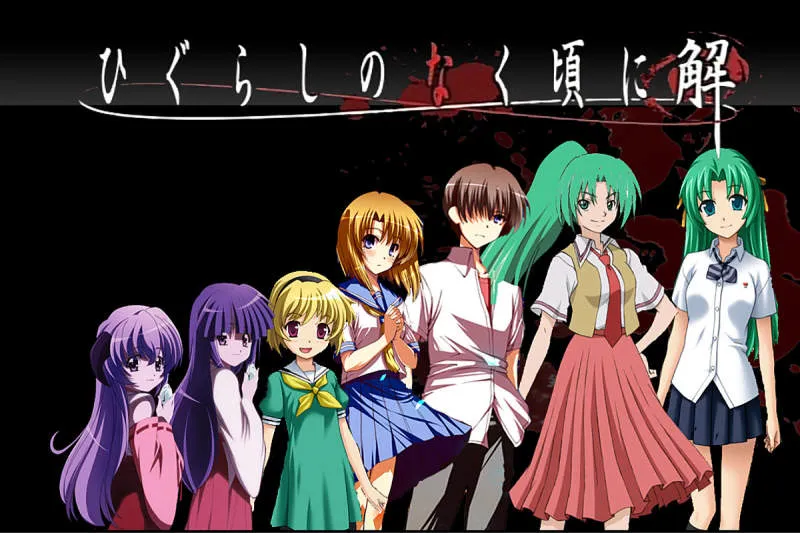
Both Higurashi When They Cry and The Girl Who Leapt Through Time explore the concept of time travel and its consequences. While The Girl Who Leapt Through Time focuses on a single protagonist trying to change her fate through time travel, Higurashi When They Cry delves into a much darker and more complex narrative. In Higurashi When They Cry, the characters find themselves trapped in a repeating cycle of violence, and their attempts to break free only lead to further bloodshed. Both stories raise questions about the nature of time, the inevitability of fate, and the consequences of altering the past.
Synopsis Higurashi When They Cry
Higurashi When They Cry is a Japanese horror visual novel series that follows the story of Keiichi Maebara, a young boy who moves to the quiet village of Hinamizawa. At first, Keiichi is charmed by the village's peaceful atmosphere and the warm welcome he receives from his new friends: Rena Ryugu, Satoko Hojo, Mion Sonozaki, and Shion Sonozaki. However, as the summer progresses, Keiichi begins to notice strange occurrences and unsettling rumors about the village's past. He soon learns that the idyllic facade of Hinamizawa hides a dark secret, one that involves a mysterious curse known as "oyashiro-sama."
The story unfolds through multiple arcs, each exploring a different perspective on the events and revealing new pieces of the puzzle. Each arc features a different "curse" that plagues the village, resulting in violent and disturbing outcomes. As Keiichi delves deeper into the mysteries of Hinamizawa, he confronts the terrifying truth behind the curse and the horrifying lengths people will go to protect their loved ones.
Madoka Magica
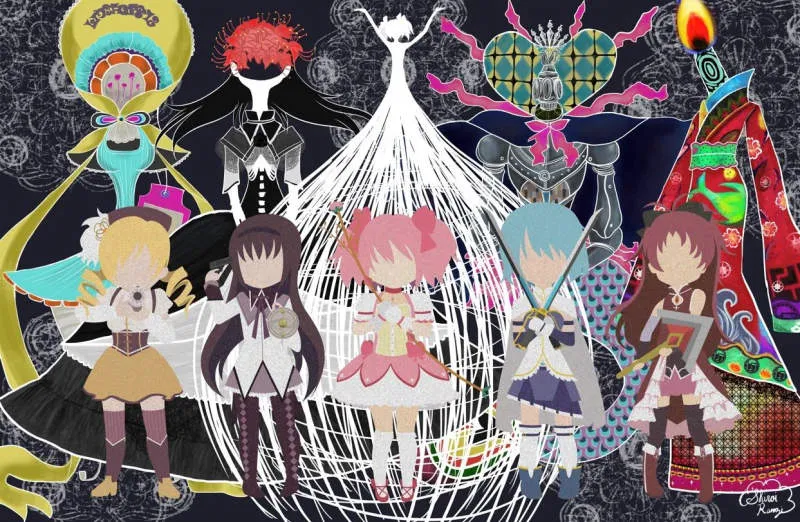
The anime Madoka Magica and the movie The Girl Who Leapt Through Time share striking thematic similarities, despite their vastly different settings and character types. Both stories revolve around young girls facing the burden of responsibility and the consequences of altering the fabric of time. Madoka, like Makoto from The Girl Who Leapt Through Time, is presented with the opportunity to manipulate time for personal gain, but the cost of her actions proves far greater than initially imagined. Ultimately, both protagonists grapple with the ethical complexities of their powers, learning that even seemingly benevolent acts can have devastating ramifications.
Synopsis Madoka Magica
Madoka Magica follows the story of Madoka Kaname, a middle school student who encounters a mysterious creature named Kyubey. Kyubey offers Madoka a contract: in exchange for her wish, she can become a magical girl and fight against witches, beings that threaten humanity. Madoka, initially reluctant, is swayed by the prospect of helping people and the desire to protect her friends.
However, the magical girl world is not as glamorous as it seems. As Madoka and her friends, Sayaka Miki, Mami Tomoe, and Homura Akemi, delve deeper into their missions, they encounter the harsh realities of being magical girls, facing the dangers of witches, the burden of their powers, and the psychological toll of their battles. The story takes a dark turn, exploring themes of loss, despair, and the true cost of making wishes.
Your Lie in April
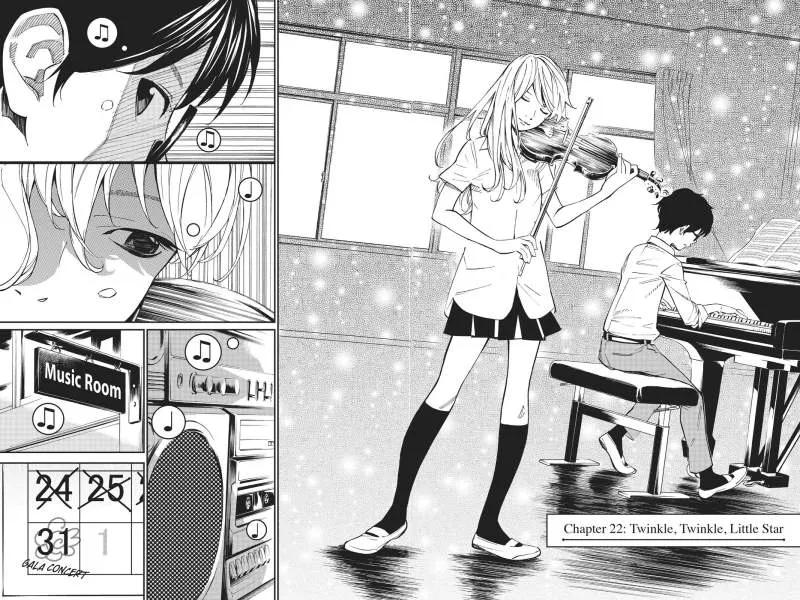
Both Your Lie in April and The Girl Who Leapt Through Time are Japanese animated films that explore themes of loss, regret, and the fleeting nature of time. While the two films employ different genres, both feature protagonists who are forced to confront difficult realities and come to terms with their own mortality. In Your Lie in April, the protagonist, Kousei Arima, is a talented pianist who loses his ability to play after the death of his mother. Similarly, in The Girl Who Leapt Through Time, the protagonist, Makoto Konno, gains the ability to time travel after a near-death experience, which forces her to grapple with the consequences of her actions and the limitations of her power.
Synopsis Your Lie in April
Your Lie in April is a Japanese manga series written and illustrated by Naoshi Arakawa. It follows the story of Kousei Arima, a prodigious pianist who lost his ability to hear music after the death of his mother. He has since given up playing the piano and lives a colorless life. One day, he meets a violinist named Kaori Miyazono, who is full of life and passion. Kaori forces Kousei to return to the world of music, and he finds himself drawn to her infectious spirit. As they play together, Kousei rediscovers his love for music and begins to heal from his past trauma.
However, Kaori's own health is deteriorating, and her time is running out. As Kousei and Kaori's relationship deepens, they must confront the fragility of life and the power of music to bring people together. Your Lie in April is a poignant and emotionally resonant story about the power of music, the beauty of life, and the importance of living each day to the fullest. It is a must-read for anyone who has ever loved or lost someone special.
Anohana: The Flower We Saw That Day
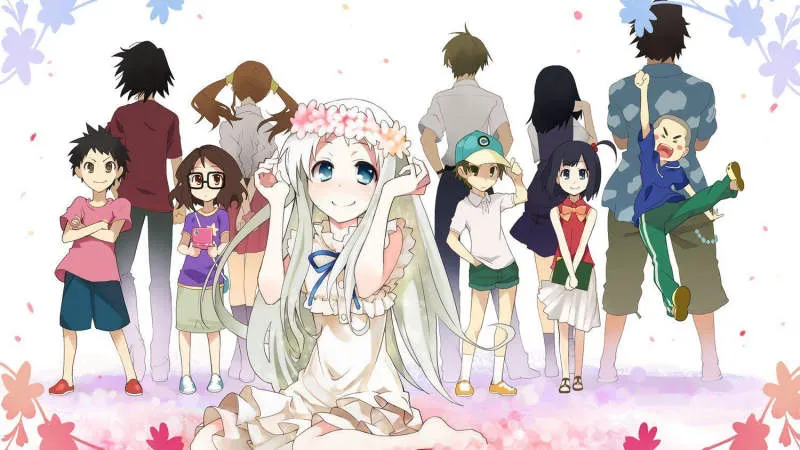
Both Anohana: The Flower We Saw That Day and The Girl Who Leapt Through Time are coming-of-age stories that deal with themes of loss, regret, and the importance of moving on. In Anohana, the protagonist, Jinta, is haunted by the ghost of his childhood friend, Menma, who died in an accident. He must confront his past and come to terms with her death in order to find peace. Similarly, in The Girl Who Leapt Through Time, the protagonist, Makoto, is given the ability to travel through time, which she uses to fix her mistakes and avoid future regrets. However, she ultimately learns that time cannot be rewritten and that she must accept the consequences of her actions. Both stories feature a strong emphasis on the power of friendship and the importance of cherishing the time we have with the people we love.
Synopsis Anohana: The Flower We Saw That Day
Anohana: The Flower We Saw That Day is a Japanese anime television series that tells the story of a group of childhood friends who have been estranged since the death of their friend, Menma, ten years prior. When Menma’s spirit appears before Jinta, the leader of their group, he is tasked with fulfilling her wish so that she can move on to the afterlife. However, this task proves to be more difficult than he initially imagined, as it forces him to confront his own guilt and grief over Menma’s death, as well as the unresolved issues between him and his friends.
As Jinta and his friends struggle to piece together Menma’s wish, they are forced to confront their past and the ways in which they have changed since her death. Through their journey of rediscovery, they learn the importance of forgiveness, acceptance, and the power of friendship. The series explores themes of loss, grief, and the importance of letting go, offering a poignant and moving exploration of the human experience.
Plastic Memories
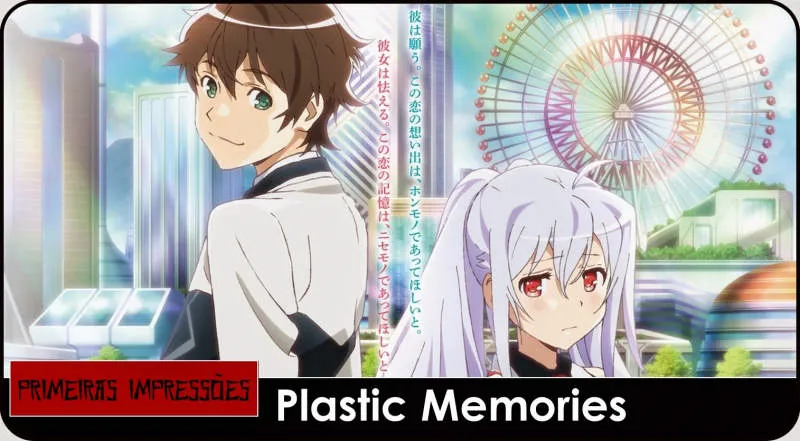
Both Plastic Memories and The Girl Who Leapt Through Time are anime that explore the themes of loss, regret, and the fleeting nature of time. While the former focuses on the emotional struggles of androids facing obsolescence, the latter centers on a girl who can rewind time. Both anime feature characters grappling with the consequences of their choices and the inevitability of change. Furthermore, both stories use a melancholy tone and bittersweet endings to evoke strong emotions in viewers. The characters’ struggles and the exploration of time manipulation create a poignant narrative that resonates with audiences.
Synopsis Plastic Memories
In a not-too-distant future, advanced androids known as Giftia have become commonplace, seamlessly integrated into human society. These artificial humans possess realistic appearances, advanced intelligence, and the capacity for emotion. However, Giftia have a limited lifespan, typically lasting around 9 years. Once their lifespan nears its end, their memories begin to fade, and their personalities deteriorate, eventually leaving them in a catatonic state. This poses a significant ethical dilemma, as it requires specialized organizations to retrieve and dispose of Giftia before they reach this point.
The story follows Tsukasa Mizugaki, a young man who has just started working at the Terminal Service One, an organization responsible for retrieving and disposing of Giftia. He is partnered with Isla, a beautiful and kind Giftia who is nearing the end of her lifespan. As they work together, Tsukasa and Isla develop a strong bond, navigating the complex emotions surrounding the Giftia's existence and the inevitable farewell that awaits them. With each passing day, Tsukasa begins to question the line between humans and Giftia, struggling to accept the reality of Isla's fading memories and the impending loss of a cherished friend.
Clannad

Both Clannad and The Girl Who Leapt Through Time are anime that explore themes of time travel, friendship, and the importance of cherishing the present moment. While The Girl Who Leapt Through Time focuses on a teenage girl’s attempts to use her newfound ability to alter past events, Clannad delves into the complexities of human relationships and the bittersweet nature of time. Both stories feature characters who grapple with difficult choices and learn valuable lessons about the power of connection. The overarching message of both anime is to appreciate the fleeting nature of life and the importance of cherishing the people around us.
Synopsis Clannad
Clannad is a Japanese visual novel series developed by Key and published in 2004. It follows the story of Tomoya Okazaki, a delinquent high school student who has given up on life after the death of his mother and his father's abandonment. One day, he meets a girl named Nagisa Furukawa, who is repeating her senior year due to illness. Nagisa's cheerful and optimistic personality inspires Tomoya to find meaning in his life again. As they spend time together, Tomoya and Nagisa form a deep bond and join the school's drama club to help Nagisa achieve her dream of putting on a play.
Throughout the story, Tomoya encounters a variety of other characters, each with their own unique struggles and experiences. He learns the importance of family, friendship, and the power of human connection. The story also explores themes of loss, grief, and the cyclical nature of life. The visual novel's popularity led to several adaptations, including a 2007 anime television series, an anime film titled Clannad Movie, and a 2008 anime television series titled Clannad: After Story. The anime adaptations have become highly acclaimed and praised for their emotional impact and heartwarming story.
Angel Beats!
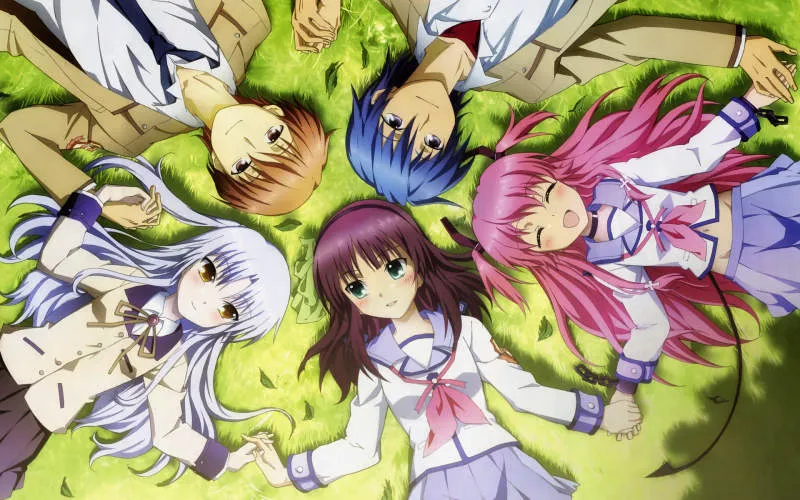
Both Angel Beats! and The Girl Who Leapt Through Time explore themes of grief, regret, and the search for meaning in life. Angel Beats! features a group of high school students who are trapped in a purgatory-like afterlife, while The Girl Who Leapt Through Time follows a high school girl who gains the ability to time travel. While their settings differ, both stories center around characters who grapple with the weight of their past and attempt to find redemption and closure. The protagonists of both stories, Otonashi from Angel Beats! and Makoto from The Girl Who Leapt Through Time, are driven by a desire to change their past and to come to terms with their losses. Their journeys are marked by emotional turmoil and self-discovery, ultimately leading to acceptance and understanding.
Synopsis Angel Beats!
Angel Beats! is a Japanese manga series written by Jun Maeda and illustrated by ゆきる. The story revolves around Yuzuru Otonashi, a boy who wakes up in the afterlife with no memories of his past. He finds himself in a strange school called the Afterlife Battlefront, where students are led by the rebellious Yuri Nakamura. They fight against Angel, a mysterious girl who appears to be the school's administrator.
Through their battles and interactions, the students learn to confront their regrets and unresolved issues from their past lives. The series explores themes of loss, grief, and finding meaning in the face of death. As the story progresses, Otonashi begins to uncover his own past and the true purpose of his existence in the afterlife. Along the way, he forms strong bonds with his fellow students, including Yuri, Angel, and the rest of the Afterlife Battlefront members.
Toradora!
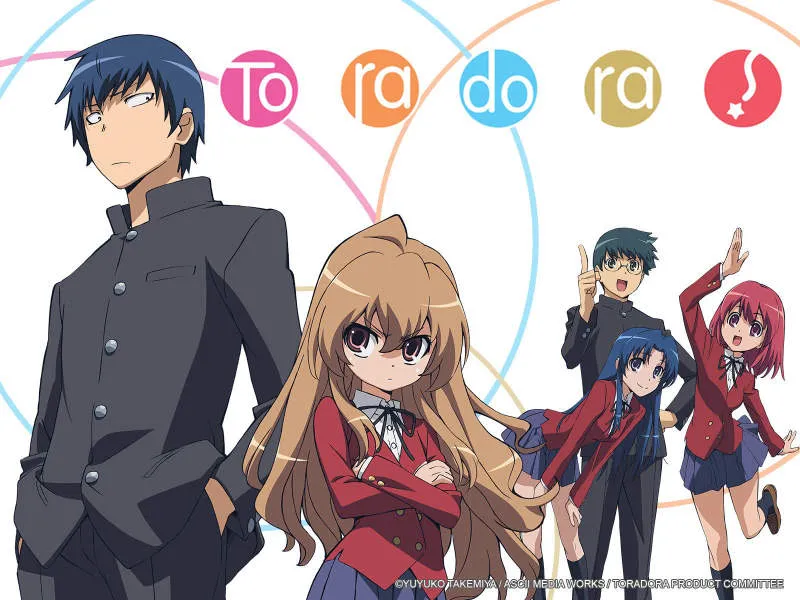
Both Toradora! and The Girl Who Leapt Through Time are beloved anime with similar themes of navigating adolescence and the complexities of relationships. Both series feature protagonists who are struggling to understand their own feelings and the feelings of others. In Toradora!, Ryuuji Takasu, a seemingly intimidating boy, is actually kind and gentle, while Taiga Aisaka, a small but fiery girl, hides a vulnerable side. Similarly, in The Girl Who Leapt Through Time, Makoto Konno grapples with the pressures of school and her feelings for her friend, Chiaki. Both shows explore the importance of friendship, the challenges of romantic love, and the journey of self-discovery. Although Toradora! is a romantic comedy and The Girl Who Leapt Through Time is a science fiction film, both offer relatable characters and compelling stories that resonate with audiences.
Synopsis Toradora!
Toradora! is a heartwarming manga that follows the story of Ryuji Takasu and Taiga Aisaka, two high school students with seemingly opposite personalities. Ryuji is a kind-hearted but misunderstood boy with a scary face, while Taiga is a small but fierce girl known for her aggressive attitude. Despite their differences, they form an unlikely alliance to help each other pursue their respective crushes. As they spend more time together, their initial animosity turns into a deep bond of friendship, and they discover hidden layers of complexity in each other's personalities.
The manga beautifully captures the themes of friendship, love, and self-discovery as Ryuji and Taiga navigate the challenges of high school life together. With a delightful mix of humor, romance, and emotional depth, Toradora! portrays the growth and development of its characters in a touching and realistic way. Through various twists and turns, the story unfolds to reveal the strength of their connection and the importance of understanding and accepting one another for who they truly are. This captivating tale is a must-read for fans of romance and coming-of-age stories.
